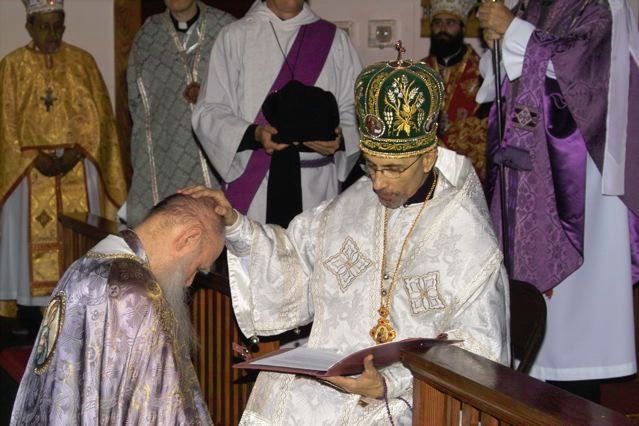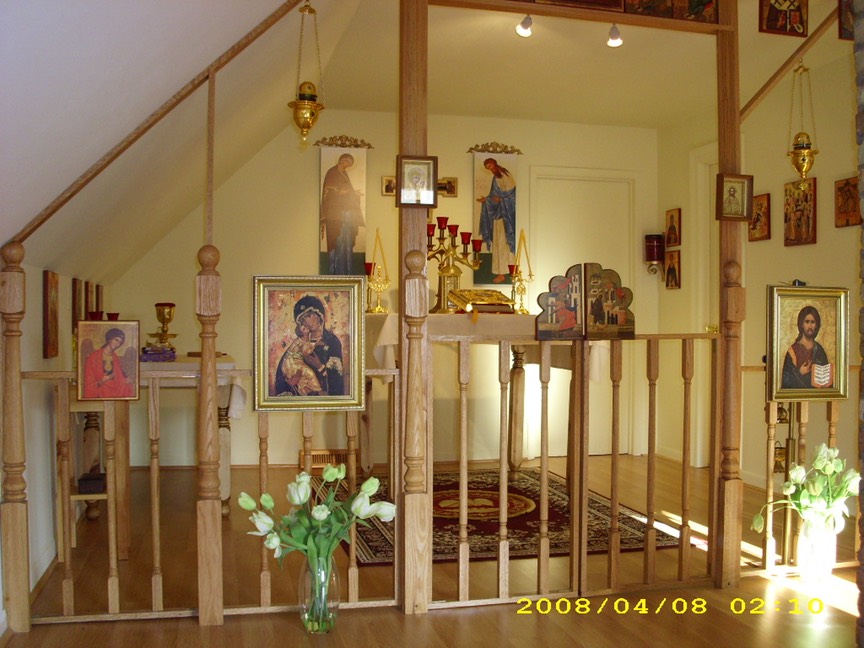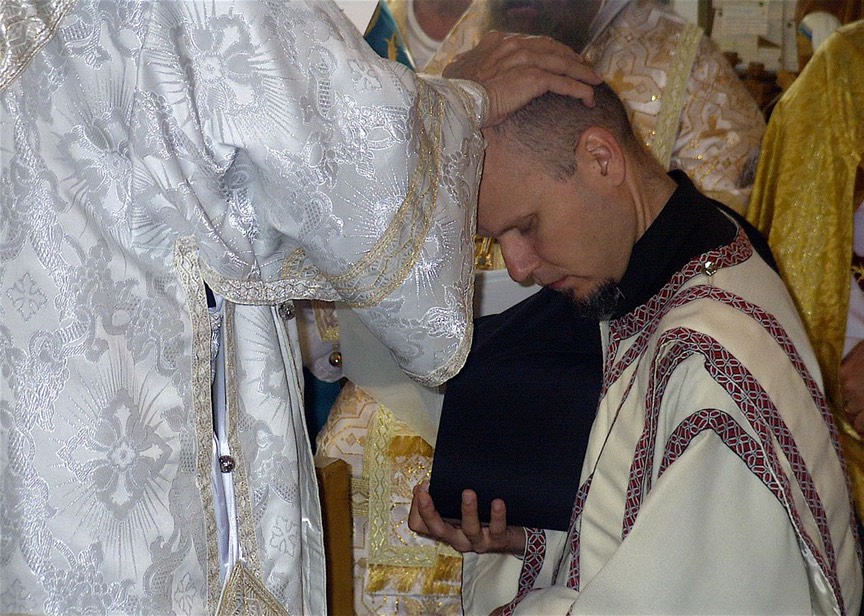
Ukrainian monastic spirituality can be summarized as the process of going from Gospel to life and from life to Gospel. Monastic life is particulary important in the life of the Eastern Christian Churches insofar as, according to Church discipline, Bishops are elected exclusively from among the celibate monastic clergy. It should also be noted that most of the great Church Fathers, East and West, were monks.
Founded in the United States and incorporated in the State of Wisconsin in 1977 (and registered as a 501(c)(3) US federally tax-exempt organization), Solus Christi is governed by the Ukrainian monastic Rule of Manjava, the Admonitions of the Founder as well as general Church Law and is a semi-eremetical community. Solus Christi Skete was granted stavropighial status in 2004 by the Holy Synod of Bishops and is directly under the authority of the Metropolitan Prime Bishop. Some of our monks, particularly those who are Bishops, seek to live a more fully eremetical life because of their need for spiritual strength and for discerning the will of the Holy Spirit in leading the Church, and their privacy is deeply respected and protected by other members of the monastic communities in which they live.
The Monks of Solus Christi, as members of a small local monastic community (skete), strive to live the Gospel by spreading the Gospel by word and example in their homes, at work and in their parishes. They strive to mirror the life of the early Apostolic Christian community and to live in perfect charity. In keeping with the ideals of early Ukrainian monasticism, each community is limited to four and no more than six monks and/or associates (Rule of Theodosius of Manjava). Particularly, in the twenty-first century economic constraints are favorable to monks living in smaller monastic communities, very often in homes identical to the homes of ordinary people, and sharing more with seculars living in their immediate proximity.

Father Marian Bellin received the Abbatial Blessing from Vladyka Ioan)
What is distinct about Solus Christi Skete is that in addition to the vows of stability, poverty, chastity and obedience, the monks take a fifth vow of unceasing prayer -- to pray always and in every situation.
The fraternity is the privileged place for developing their sense of Church, their Christian monastic vocation and ministry. Associate members (seminarians, clergy and lay men) are also admitted to membership and profess private vows of poverty, chastity, obedience and unceasing prayer.
Community life, along with its common prayer (daily celebration of the Divine Liturgy and Offices), formation, and fellowship provides the spiritual nourishment needed to live as a Christian in the world.

[Though simple, the chapel at Solus Christi Skete (monastery) in Milwaukee
is the foundation and heart of the life of the monks living there]
Candidates must be in good standing with the Church, be willing to accept that professing final vows within Solus Christi means a life-long commitment to the monastic way of life, be at least 21 years of age and no more that 45 years of age and be proven to be of sound physical, psychological, spiritual and moral health.
There are five stages in the monastic formation process, namely:
Postulancy
3-6 months (exploring the life of Solus Christi Skete through discernment);
Novitiate
a minimum of one year (looking at the process of living the life of the community);
Rassophore Monk
a minimum of three years - journeying with the fraternity to find out if God is calling you to live this way of life. (times may be extended, but not shortened);
Stavrophore (Monk of the Small Schema) Monk - Monastic Consecration for life
Monastic profession taken for life after the period of temporal vows has been completed.
Schemamonk (Monk of the Great Schema)
After several years as a Stavrophore, monks whose Ihumen (Abbot) feels that they have reached a high level of spiritual excellence may reach the final stage, called the Great Schema. The tonsure of a Schemamonk follows the same format as the Stavrophore, and he renews the same vows and is tonsured in the same manner. But in addition to all the garments worn by the Stavrophore, he is given the analav (άνάλαβος) which is the article of monastic vesture emblematic of the Great Schema. For this reason, the analav (άνάλαβος) itself is sometimes itself called the "Great Schema.”

Fr. Archdeacon Sergiy Larin, MD, M.Div.
was blessed as Ihumen (Abbot) of Solus Christi Skete, Milwaukee, WI
by Vladyka Ioan, Archbishop of the USA and Archimandrite of Solus Christi,
on August 19, 2007 at the Divine Liturgy of the Holy Synod of Bishops
of the Archdiocese of the United States held at Coleman, MI.
Formation does not end with Initial Formation, but continues as an on-going process for the rest of one’s life.
Seminarians are formed through Solus Christi Seminary whose formation program. All seminarians are expected to complete a Bachelor's Degree. After completing their Bachelor Degrees, seminarians may advance to theological studies and to diaconal and/or priestly formation.
If you are searching for a way to renew your baptismal commitment, to deepen your relationship with the Lord, and give witness to the Kingdom of God by living and working in the marketplace, the Lord may be inviting you to consider a vocation as a member of Solus Christi Skete which has dependant communities in the United States and in Ukraine.
Monastic canditates may contact the Skete at: soluschristi@gmail.com
Seminarians and/or ordained candidates may contact:
Father Archdeacon Sergiy Larin, Director of Seminary Formation, at deaconsergiy@gmail.com
May the Lord give you His Peace!